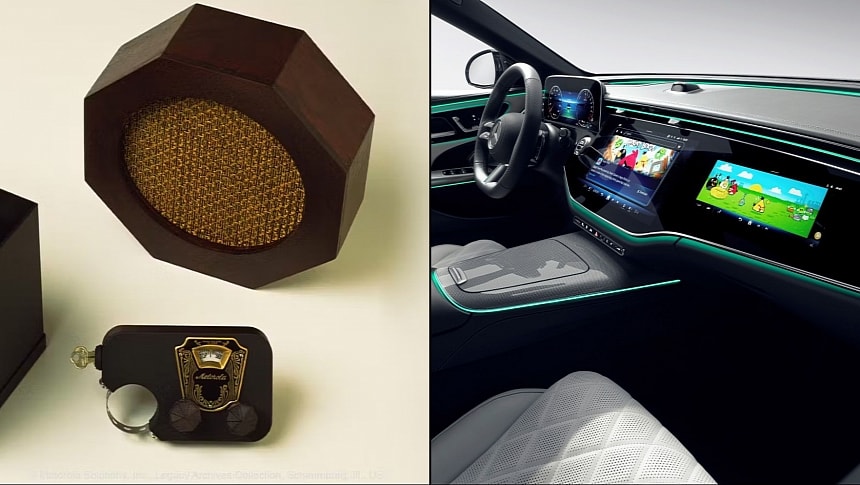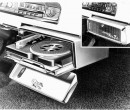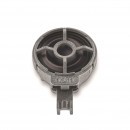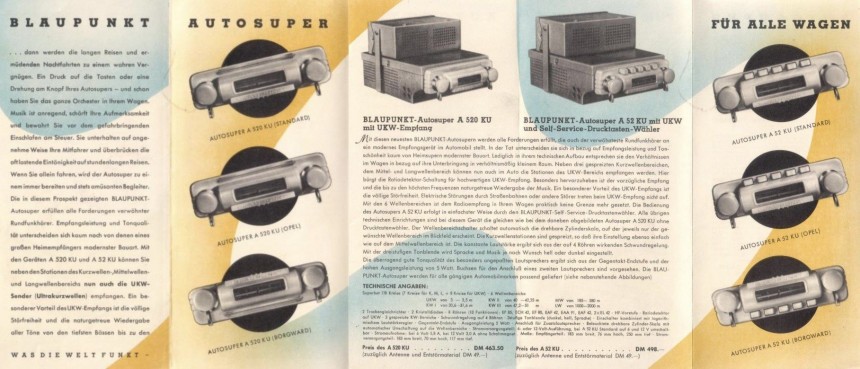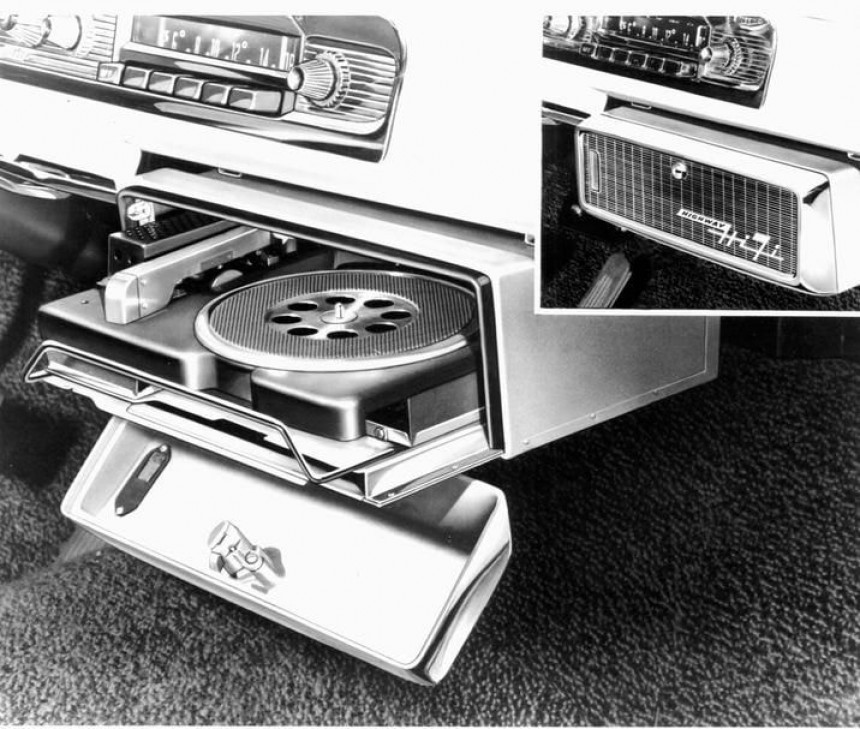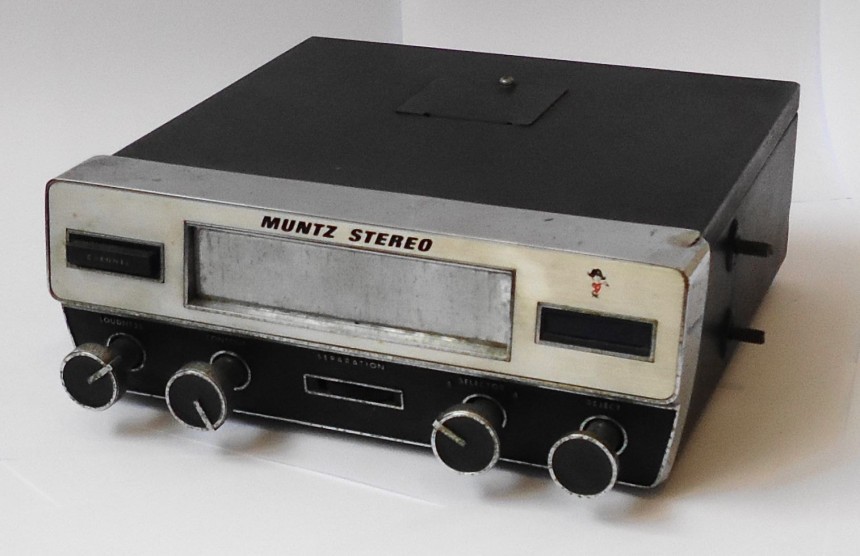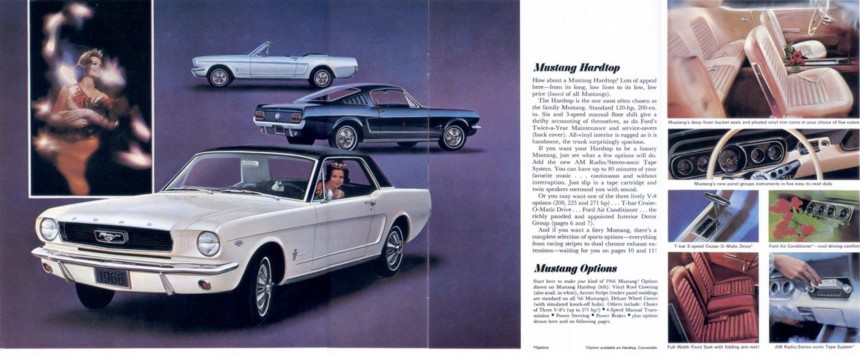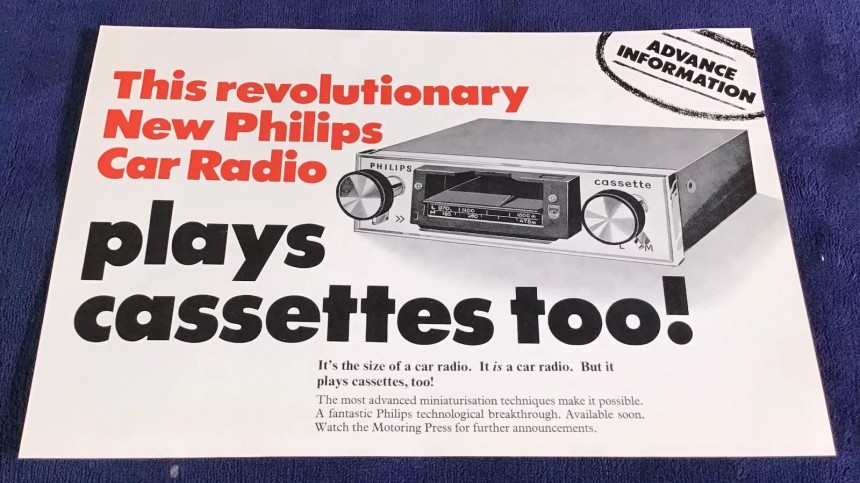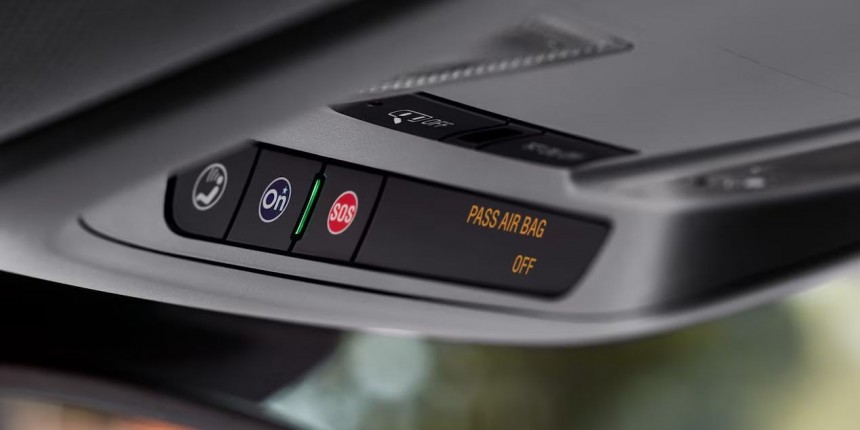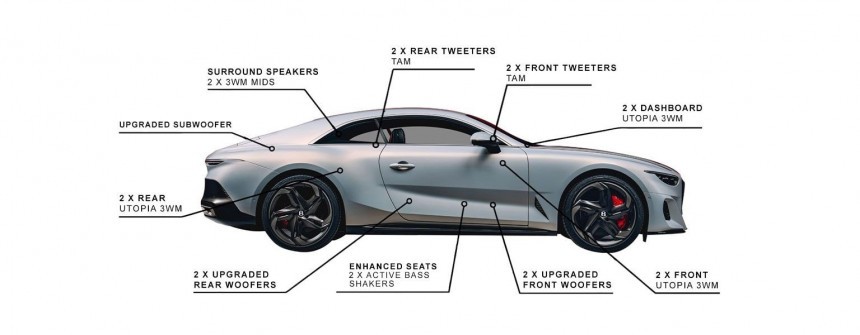SiriusXM satellite radio, Spotify music streaming, and Netflix video streaming. In-car entertainment has come a long way in the past 120 years or so, which is hardly surprising.
On the one hand, the past century was a period of tremendous innovation and colossal progress. From the automobile going mainstream with the Ford Motor Company's Model T to commercial aviation, nuclear power and weapons, antibiotics, and the rise of the Internet, one cannot downplay the impact of the 20th century on our daily lives.
But on the other hand, profit also played a vital role in the evolution of the original equipment manufacturer infotainment system. Think made-for-radio ads and Tesla charging 99 buckaroos (plus the applicable tax) for a year of Premium Connectivity, there's a lot of money to be made, be it directly or indirectly.
To understand how we got to OEM car infotainment systems that run TikTok and Angry Birds natively, we first have to turn back time to the year 1901. That's when telegraph inventor Guglielmo Marconi installed a telegraph into a steam-powered wagon for the British Army, thus paving the way for the very first attempts at in-car radio.
Prior to the debut of dedicated AM car radios, battery-operated house radios had to suffice. According to newspaper accounts, General Motors brand Chevrolet and the Springfield Body Corporation offered factory-installed radios in 1922 and 1923. Be that as it may, it still isn't clear if said radios were adapted from house radios or produced in large numbers.
The Radio Auto Distributors Airtone 3D from 1925 and the All American Mohawk Corp Batt. 115-1926 also deserve to be mentioned, along with the Philco Transitone from 1927. Three years later, the Galvin Manufacturing Corporation rolled out the first commercially successful car radio in the form of the 5T71.
Galvin's pioneering system comprised a receiver, a speaker, an aerial, a battery, suppressors, and – of course – tuning and volume controls. The company that would later become Motorola originally charged 110 dollars with installation during a time when $495 got you a Model A Tudor Sedan. Adjusted for inflation, make that $2,080 for the AM radio system and $9,360 for the car.
With push-button AM radios becoming ubiquitous by the end of the 1930s, the only way forward was the switch from amplitude modulation to frequency modulation. It was a long wait, though, for Blaupunkt launched the world's first car-specific FM radio in 1952.
Even so, amplitude modulation ruled the rest of the 1950s and a fair bit of the 1960s. FM would come to prominence in the latter part of the Swinging Sixties, for the greater bandwidth results in much better sound quality. As for how much an FM radio used to cost back in those days, we'll use a specific Porsche factory accessory booklet for that.
According to said booklet, the Blaupunkt Frankfurt AM/FM radio for the A-series 356 retailed at $126 in the United States market back in 1956, with the 70-horse 1600 Coupe starting at 2,750 dollars in this part of the world. In other words, a would-be 356 A owner would have to pony up $31,915 for the car and an extra $1,470 for AM/FM radio.
Vinyl and record players are easily dismissible nowadays because of hipsters. But in the olden days, record players revolutionized in-car entertainment and – to a certain degree – the music industry as well. Peter Goldmark, head of CBS Laboratories, is credited with designing the Highway Hi-Fi phonograph for automotive applications.
Initially exclusive to Chrysler, Dodge, Plymouth, and Desoto vehicles, the Highway Hi-Fi proved to be a huge commercial flop. How come? For starters, the 1950s were dominated by the 12-inch 33 from CBS and the 7-inch 45 from. The long play was too large for an automotive application, whereas the single-specific 7 had a song per side.
To this effect, Chrysler and CBS agreed on 7 inches and 16 2/3 revolutions per minute, along with 550 grooves per inch. As if the limited catalog of records wasn't bad enough for this unusual format, the Highway Hi-Fi liked to skip a lot in lower-end cars. Eventually, the Chrysler Corporation introduced the RCA Auto Victrola system. It was designed for the highly popular 45 seven exclusively, with the Victrola stacking a mighty 14 records on top of each other.
The next chapter in the history of in-vehicle physical media was the 4-track player, with Madman Muntz leading the pack. Enter the Muntz Stereo-Pak Stereo Tape Cartridge System of 1962, which accommodated no fewer than four cartridge sizes. Not only did the 4-track system exceed the sound quality of the 45-rpm record player, but Muntz was quick to license music by popular artists.
For example, a licensing deal with Capitol brought all things The Beatles from 1964 to 1970 to the 4-track medium, including Wonderwall Music by George Harrison, The Family Way by Paul McCartney, and Two Virgins by John Lennon. Customization legend George Barris, along with Peter Lawford and Frank Sinatra, were quick to adopt the Muntz Autostereo in their cars.
Little did he know back then, but Muntz signed the 4-track cartridge system's death warrant by demonstrating it to Bill Lear. Created by a Lear-led consortium that included big names like General Motors and the Ford Motor Company, the Stereo 8 cartridge quickly rose to prominence, resulting in the demise of Muntz's 4-track.
The aforementioned consortium is what gave the 8-track plenty of traction from the outset. Lear and the Lear Jet Corporation got two of Detroit's Big Three on board with the project, plus RCA, Motorola, and tape manufacturer Ampex in order to make the 8-track a reality. It went official for the 1966 model year in the Mustang, which is an icon in and of itself.
The Hardtop Coupe was the most affordable 'Stang that year at $2,522 or $25,275 adjusted for inflation. $128.29 was the retail price of the 8-track, meaning $1,285 as of this writing. Even though it presented a few advantages over the 4-track, the Stereo 8 wasn't as good fidelity-wise due to narrower tape tracks.
Another issue was the jam-prone tape transport mechanism. Despite these shortcomings, the powerful consortium behind the 8-track ensured its commercial success until the cassette tape became the new king of the in-vehicle physical media hill.
Unlike the 4- and 8-track mediums, the cassette does not play continuously in an endless loop. Hidden behind a flat box, a pair of reels made the cassette that bit cheaper to produce. In the beginning, however, the RCA Sound Tape Cartridge and Philips Compact Cassette saw little in the way of adoption.
The Philips EL 3300 cassette recorder of 1963 turned things around, with Philips debuting the world's first in-dash cassette player in 1968. Following the RN582, the Mexico Olympia and Europa Stereo from Becker launched with cassette players in 1969. Stuttgart-based Mercedes is considered the first automaker to adopt cassette players, with Becker-supplied radio and cassette-playing systems becoming optional at Merc in 1971.
Despite being challenged by DAT and MiniDisc in the 1980s and 1990s, the Compact Cassette would prove way more popular. As you're well aware, the Compact Disc would ultimately replace the Compact Cassette as the medium of choice for music records, with CDs eventually becoming obsolete themselves due to music streaming.
The Lexus SC430 and Ford Crown Victoria were the very last series-production cars to come with factory-installed cassette players. At that point, the CD player was nearing obsoletion as well. Similar to the Compact Cassette, the Compact Disc enjoyed a pretty good run in the automotive industry, with Pioneer introducing the CDX-1 in 1984.
This may come as a surprise to some peeps out there, but a handful of automobiles feature CD players for model year 2025. Subaru comes to mind with the Outback Touring and Outback Touring XT, which benefit from a Harman Kardon premium audio system with 12 speakers and a 576-watt equivalent amp.
With the rise of MP3 players and filesharing in the 2000s, it goes without saying that CD sales nosedived like crazy. According to the Recording Industry Association of America, the CD accounted for 3.1 percent of total recorded music revenues in the United States by format in 2023. Paid subscriptions, by comparison, accounted for 59.3 percent.
Satellite navigation may not be in-car entertainment per se, but navigation is an integral part of any modern-day infotainment system. The 1981 Electro Gyrocator from Honda was the first commercially available automotive navigation system, whereas Toyota introduced the first CD-ROM-based system in 1987 on the S130-gen Crown.
GPS would have to wait until 1990 with the JC-series Eunos Cosmo, a lesser-known Mazda tourer that sold in abysmally poor numbers. Produced through 1995, the rotary-powered Eunos Cosmo was retired with only 8,875 examples to its name. To this day, it's the only Mazda to flaunt a triple-rotor mill.
Regarding the Cosmo's GPS-based system, the Mitsubishi Electric-developed Car Communication System further included a phone and a television. As one might imagine, it was a two-dimensional affair with poorer accuracy than your smartphone's GPS module. Its resolution wasn't anything to write home about either, but on the flip side, its cathode ray tube display was a touchscreen.
The birth of the connected car doesn't start with GM's OnStar division. Linked to services or other devices by means of a network, the connected car traces its roots back to 1980, the year in which BMW integrated an on-board computer for Formula 1. That year, Call Me by Blondie topped Billboard's Hot 100 chart.
OnStar would have to wait until 1996. Initially available in the 1997 Cadillac Eldorado, Seville, and DeVille, first-gen OnStar was co-developed with Motorola Automotive. The first telematics system of its kind was launched at the 1996 edition of the Chicago Auto Show.
Today, the OnStar system is more than getting emergency help in the event of an accident. More specifically, the current iteration further boasts automatic crash response, stolen vehicle assistance, roadside assistance, turn-by-turn navigation, Crisis Assist, Alexa and Google Built-in, Super Cruise, in-vehicle apps via the App Access Plan, and many more.
While it's hard to believe that OnStar predates the first integration of iPod and car audio, bear in mind that Apple released the iPod in 2001. That year, the year-end Hot 100 singles chart included the likes of Thank You by Dido, If You're Gone by Matchbox Twenty, and Independent Woman by Destiny's Child.
The Cupertino-based giant and Munich's BMW AG were first in this regard, with BMW's iPod Adapter launching in 2004 for select models. In the first instance, said models were the 3 Series, Z4 Coupe, Z4 Roadster, X3, and the US-assembled X5.
Excluding installation cost, the adapter was $149 regardless of model. Later in 2004, the adaptor would carry over to the MINI brand. To whom it may concern, 149 bucks adjusted for inflation is just under 250 bucks today.
And what a clever all-wheel-drive system to boot, for the 4RM (a.k.a. Quattro Ruote Motrici) uses a front-mounted gearbox with two gears, with first covering the rear transaxle's first and second, while second covers third and fourth. Turning our attention back to Apple, the Kia Soul was among the first affordable cars to adopt Apple CarPlay.
During its first year on the market, Apple had deals in place with Ferrari, Kia, Mercedes-Benz, Volvo, BMW, Ford, General Motors, Hyundai, Honda, Jaguar Land Rover, Mitsubishi, Groupe PSA (make that Peugeot and Citroen), Subaru, Nissan, Suzuki, and the largest Japanese automaker of the bunch. Aston Martin and Porsche were the first automakers to confirm CarPlay 2 in December 2023. Over at Aston Martin, the DB12 was the first model to receive second-gen CarPlay.
Google's biggest mistake with Android Auto was the reluctance to allow third-party mapping apps. Thankfully for everyone, Google backed down in 2020 with the introduction of the Sygic offline mapping app. Other than mapping, honorable mentions include WhatsApp Messenger, Facebook Messenger, Telegram, Spotify, and Audible.
Android Auto should not be confused with Android Automotive. The latter is an Android-based operating system tailored for automobiles, a platform developed by Google and Intel. The system made its commercial debut in March 2020 with the start of production for the Polestar 2 electric liftback.
The fifth-gen standard was introduced in 2016. Three years later, Chinese electronics giant Huawei introduced the first 5G communications hardware developed specifically for automotive applications. Based on the Balong 5000 chip, the MH5000 module was launched at the 2019 Shanghai Auto Show, a mammoth event where Mercedes-Benz unveiled the Concept GLB.
5G adoption, however, is pitifully slow in this industry. Here's hoping the transition to 5G kicks into high gear in the second half of the 2020s in the bid to achieve Level 5 autonomy.
The Entertainment Plus in MBUX Entertainment Plus stands for Mercedes me connect services, a 5G module, and – naturally – a data package. Stuttgart's favorite son is much obliged to crank up the in-car distractions to 11 with the Superscreen package, which builds on the central touchscreen display and the digital instrument cluster with a front-passenger touchscreen.
Similar to Superscreen, the Hyperscreen setup is presently exclusive to electric vehicles from the Three-Pointed Star. Going forward, MBUX will be replaced by MB.OS, a new operating system that leverages QNX for safety features and the dash cluster, with Linux taking care of the infotainment side.
They're nothing compared to Naim's audio systems for Bentley, with the Continental getting 18 and the Flying Spur 19. The Mulliner Batur has the most speakers, with Bentley and Naim advertising no fewer than 20 and 2,200 watts. The most powerful in-car original equipment manufacturer audio system adds 25,000 pounds sterling to the sticker price of the £1.65 million Batur.
Its party piece comes in the form of a pair of so-called Active Bass Transducers in the seats, which should give a whole new dimension to your favorite dubstep tune. Joined by one subwoofer, two woofers, nine mid-range speakers, and six tweeters, the Naim for Mulliner ultra-high-fidelity audio system is one seriously badass piece of kit.
But on the other hand, profit also played a vital role in the evolution of the original equipment manufacturer infotainment system. Think made-for-radio ads and Tesla charging 99 buckaroos (plus the applicable tax) for a year of Premium Connectivity, there's a lot of money to be made, be it directly or indirectly.
To understand how we got to OEM car infotainment systems that run TikTok and Angry Birds natively, we first have to turn back time to the year 1901. That's when telegraph inventor Guglielmo Marconi installed a telegraph into a steam-powered wagon for the British Army, thus paving the way for the very first attempts at in-car radio.
AM radio
The Radio Auto Distributors Airtone 3D from 1925 and the All American Mohawk Corp Batt. 115-1926 also deserve to be mentioned, along with the Philco Transitone from 1927. Three years later, the Galvin Manufacturing Corporation rolled out the first commercially successful car radio in the form of the 5T71.
Galvin's pioneering system comprised a receiver, a speaker, an aerial, a battery, suppressors, and – of course – tuning and volume controls. The company that would later become Motorola originally charged 110 dollars with installation during a time when $495 got you a Model A Tudor Sedan. Adjusted for inflation, make that $2,080 for the AM radio system and $9,360 for the car.
FM radio
Even so, amplitude modulation ruled the rest of the 1950s and a fair bit of the 1960s. FM would come to prominence in the latter part of the Swinging Sixties, for the greater bandwidth results in much better sound quality. As for how much an FM radio used to cost back in those days, we'll use a specific Porsche factory accessory booklet for that.
According to said booklet, the Blaupunkt Frankfurt AM/FM radio for the A-series 356 retailed at $126 in the United States market back in 1956, with the 70-horse 1600 Coupe starting at 2,750 dollars in this part of the world. In other words, a would-be 356 A owner would have to pony up $31,915 for the car and an extra $1,470 for AM/FM radio.
Record player
Initially exclusive to Chrysler, Dodge, Plymouth, and Desoto vehicles, the Highway Hi-Fi proved to be a huge commercial flop. How come? For starters, the 1950s were dominated by the 12-inch 33 from CBS and the 7-inch 45 from. The long play was too large for an automotive application, whereas the single-specific 7 had a song per side.
To this effect, Chrysler and CBS agreed on 7 inches and 16 2/3 revolutions per minute, along with 550 grooves per inch. As if the limited catalog of records wasn't bad enough for this unusual format, the Highway Hi-Fi liked to skip a lot in lower-end cars. Eventually, the Chrysler Corporation introduced the RCA Auto Victrola system. It was designed for the highly popular 45 seven exclusively, with the Victrola stacking a mighty 14 records on top of each other.
4-track player
For example, a licensing deal with Capitol brought all things The Beatles from 1964 to 1970 to the 4-track medium, including Wonderwall Music by George Harrison, The Family Way by Paul McCartney, and Two Virgins by John Lennon. Customization legend George Barris, along with Peter Lawford and Frank Sinatra, were quick to adopt the Muntz Autostereo in their cars.
Little did he know back then, but Muntz signed the 4-track cartridge system's death warrant by demonstrating it to Bill Lear. Created by a Lear-led consortium that included big names like General Motors and the Ford Motor Company, the Stereo 8 cartridge quickly rose to prominence, resulting in the demise of Muntz's 4-track.
8-track player
The Hardtop Coupe was the most affordable 'Stang that year at $2,522 or $25,275 adjusted for inflation. $128.29 was the retail price of the 8-track, meaning $1,285 as of this writing. Even though it presented a few advantages over the 4-track, the Stereo 8 wasn't as good fidelity-wise due to narrower tape tracks.
Another issue was the jam-prone tape transport mechanism. Despite these shortcomings, the powerful consortium behind the 8-track ensured its commercial success until the cassette tape became the new king of the in-vehicle physical media hill.
Cassette player
The Philips EL 3300 cassette recorder of 1963 turned things around, with Philips debuting the world's first in-dash cassette player in 1968. Following the RN582, the Mexico Olympia and Europa Stereo from Becker launched with cassette players in 1969. Stuttgart-based Mercedes is considered the first automaker to adopt cassette players, with Becker-supplied radio and cassette-playing systems becoming optional at Merc in 1971.
Despite being challenged by DAT and MiniDisc in the 1980s and 1990s, the Compact Cassette would prove way more popular. As you're well aware, the Compact Disc would ultimately replace the Compact Cassette as the medium of choice for music records, with CDs eventually becoming obsolete themselves due to music streaming.
CD player
This may come as a surprise to some peeps out there, but a handful of automobiles feature CD players for model year 2025. Subaru comes to mind with the Outback Touring and Outback Touring XT, which benefit from a Harman Kardon premium audio system with 12 speakers and a 576-watt equivalent amp.
With the rise of MP3 players and filesharing in the 2000s, it goes without saying that CD sales nosedived like crazy. According to the Recording Industry Association of America, the CD accounted for 3.1 percent of total recorded music revenues in the United States by format in 2023. Paid subscriptions, by comparison, accounted for 59.3 percent.
GPS navigation
GPS would have to wait until 1990 with the JC-series Eunos Cosmo, a lesser-known Mazda tourer that sold in abysmally poor numbers. Produced through 1995, the rotary-powered Eunos Cosmo was retired with only 8,875 examples to its name. To this day, it's the only Mazda to flaunt a triple-rotor mill.
Regarding the Cosmo's GPS-based system, the Mitsubishi Electric-developed Car Communication System further included a phone and a television. As one might imagine, it was a two-dimensional affair with poorer accuracy than your smartphone's GPS module. Its resolution wasn't anything to write home about either, but on the flip side, its cathode ray tube display was a touchscreen.
Connected car features
OnStar would have to wait until 1996. Initially available in the 1997 Cadillac Eldorado, Seville, and DeVille, first-gen OnStar was co-developed with Motorola Automotive. The first telematics system of its kind was launched at the 1996 edition of the Chicago Auto Show.
Today, the OnStar system is more than getting emergency help in the event of an accident. More specifically, the current iteration further boasts automatic crash response, stolen vehicle assistance, roadside assistance, turn-by-turn navigation, Crisis Assist, Alexa and Google Built-in, Super Cruise, in-vehicle apps via the App Access Plan, and many more.
iPod adapter
The Cupertino-based giant and Munich's BMW AG were first in this regard, with BMW's iPod Adapter launching in 2004 for select models. In the first instance, said models were the 3 Series, Z4 Coupe, Z4 Roadster, X3, and the US-assembled X5.
Excluding installation cost, the adapter was $149 regardless of model. Later in 2004, the adaptor would carry over to the MINI brand. To whom it may concern, 149 bucks adjusted for inflation is just under 250 bucks today.
Apple CarPlay
Love them or hate them, Apple CarPlay and Android Auto are here to stay. Apple CarPlay was first to come to market in March 2014, with its first application being the most controversial Ferrari of that era. Yours truly is obviously referring to the FF, the first series-production Fezza to feature all-wheel drive.And what a clever all-wheel-drive system to boot, for the 4RM (a.k.a. Quattro Ruote Motrici) uses a front-mounted gearbox with two gears, with first covering the rear transaxle's first and second, while second covers third and fourth. Turning our attention back to Apple, the Kia Soul was among the first affordable cars to adopt Apple CarPlay.
During its first year on the market, Apple had deals in place with Ferrari, Kia, Mercedes-Benz, Volvo, BMW, Ford, General Motors, Hyundai, Honda, Jaguar Land Rover, Mitsubishi, Groupe PSA (make that Peugeot and Citroen), Subaru, Nissan, Suzuki, and the largest Japanese automaker of the bunch. Aston Martin and Porsche were the first automakers to confirm CarPlay 2 in December 2023. Over at Aston Martin, the DB12 was the first model to receive second-gen CarPlay.
Android Auto
Similar to Apple's standard, Android Auto also works by mirroring features of a smartphone on the vehicle's touchscreen. The Google confirmed Android Auto at the 2014 Google I/O event, with the app going public in March 2015. The first car with Android Auto support launched in March 2014 in the form of the 2015 model year Hyundai Sonata.Google's biggest mistake with Android Auto was the reluctance to allow third-party mapping apps. Thankfully for everyone, Google backed down in 2020 with the introduction of the Sygic offline mapping app. Other than mapping, honorable mentions include WhatsApp Messenger, Facebook Messenger, Telegram, Spotify, and Audible.
Android Auto should not be confused with Android Automotive. The latter is an Android-based operating system tailored for automobiles, a platform developed by Google and Intel. The system made its commercial debut in March 2020 with the start of production for the Polestar 2 electric liftback.
5G connectivity
Fifth-generation wireless network technology brought us previously unimaginable Internet download and upload speeds. With 5G being extremely important in our pursuit of true automated driving as opposed to driver assistance, it's no wonder that more and more automakers decided that 5G is a must-have.The fifth-gen standard was introduced in 2016. Three years later, Chinese electronics giant Huawei introduced the first 5G communications hardware developed specifically for automotive applications. Based on the Balong 5000 chip, the MH5000 module was launched at the 2019 Shanghai Auto Show, a mammoth event where Mercedes-Benz unveiled the Concept GLB.
5G adoption, however, is pitifully slow in this industry. Here's hoping the transition to 5G kicks into high gear in the second half of the 2020s in the bid to achieve Level 5 autonomy.
Mercedes-Benz MBUX Entertainment Plus
Speaking of 5G connectivity, the 214-series Executive Class comes with a 5G module. The pièce de resistance, however, is the MBUX Entertainment Plus infotainment system, for it allows you to install third-party applications.The Entertainment Plus in MBUX Entertainment Plus stands for Mercedes me connect services, a 5G module, and – naturally – a data package. Stuttgart's favorite son is much obliged to crank up the in-car distractions to 11 with the Superscreen package, which builds on the central touchscreen display and the digital instrument cluster with a front-passenger touchscreen.
Similar to Superscreen, the Hyperscreen setup is presently exclusive to electric vehicles from the Three-Pointed Star. Going forward, MBUX will be replaced by MB.OS, a new operating system that leverages QNX for safety features and the dash cluster, with Linux taking care of the infotainment side.
Naim audio systems for Bentley
When it comes to OEM car audio systems, GM reigns supreme in terms of speaker count. Cadillac offers 38 speakers (not including three external transducers) in the Celestiq, whereas the internal combustion Escalade and the Escalade IQ can be optioned with 40.They're nothing compared to Naim's audio systems for Bentley, with the Continental getting 18 and the Flying Spur 19. The Mulliner Batur has the most speakers, with Bentley and Naim advertising no fewer than 20 and 2,200 watts. The most powerful in-car original equipment manufacturer audio system adds 25,000 pounds sterling to the sticker price of the £1.65 million Batur.
Its party piece comes in the form of a pair of so-called Active Bass Transducers in the seats, which should give a whole new dimension to your favorite dubstep tune. Joined by one subwoofer, two woofers, nine mid-range speakers, and six tweeters, the Naim for Mulliner ultra-high-fidelity audio system is one seriously badass piece of kit.
